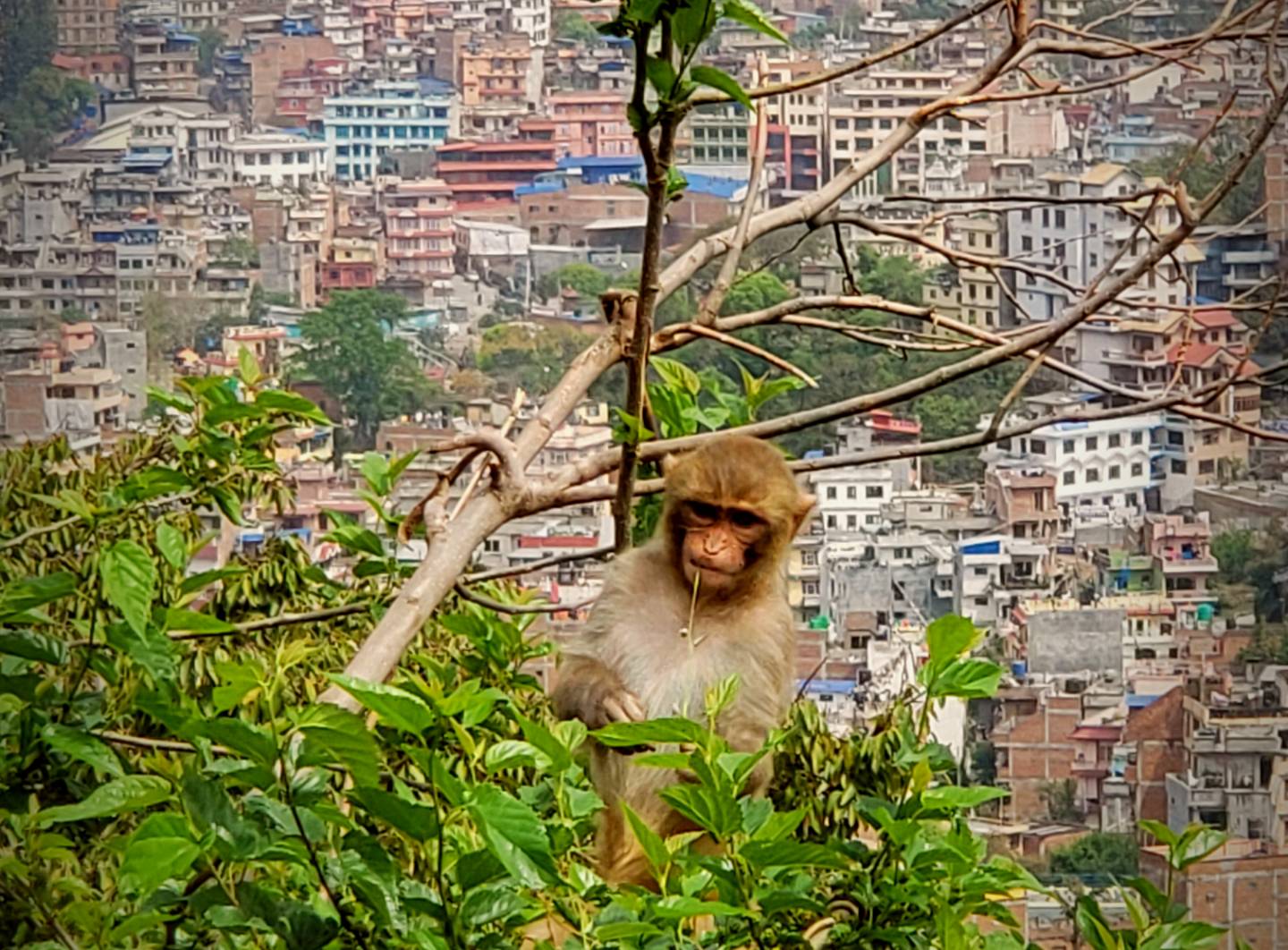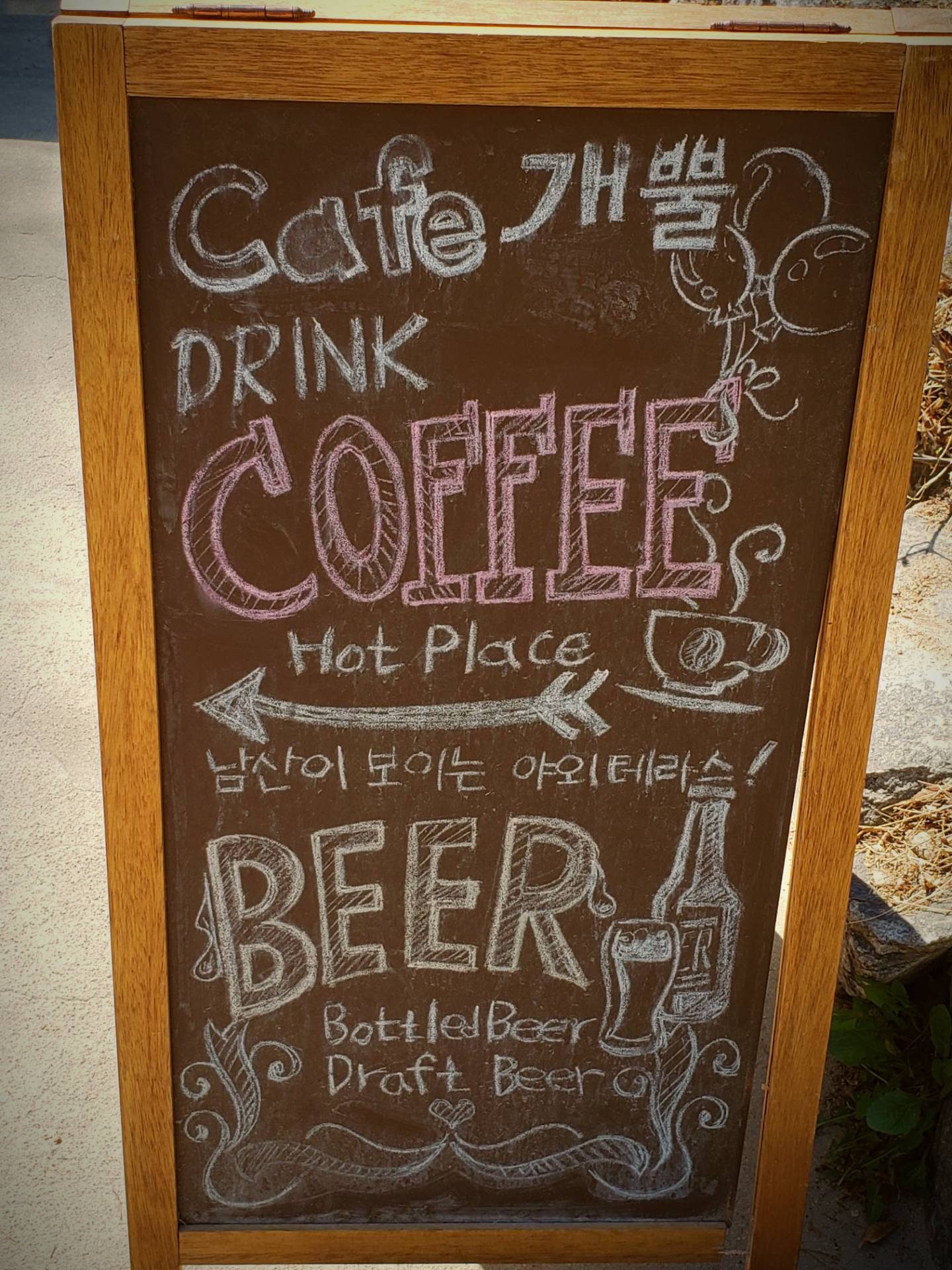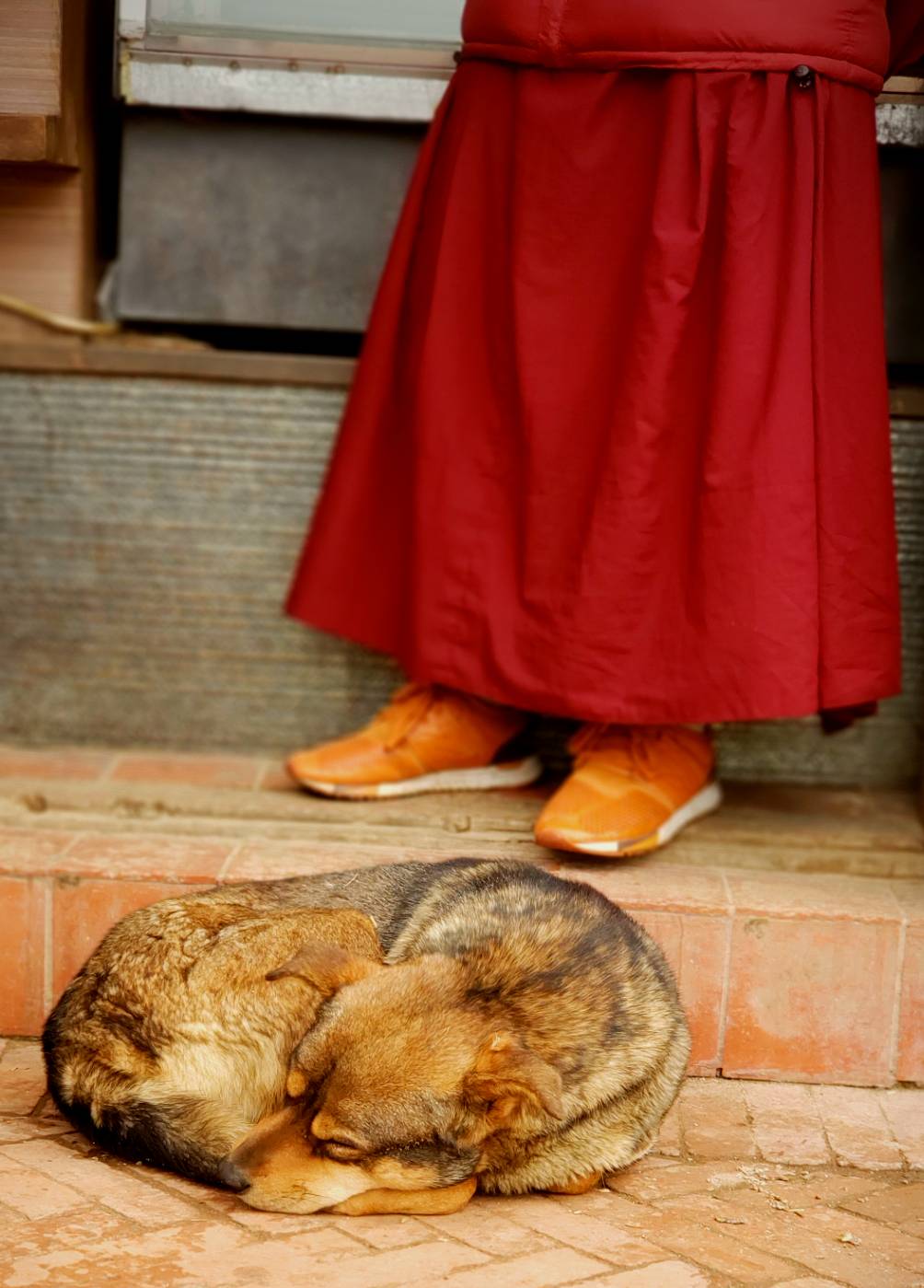By Michelle Fish
15 hours from LA to Seoul. 12 hours in the Seoul Airport (COMING SOON: Ask the Robot). Then seven more hours to Nepal. Surely, you must be on the other side of the world if it takes all that time to get there. And speaking of time, you cross the international date line on the way, so you literally lose a day. Thursday turns into Saturday, and Saturday is almost over. I suggest you not think about that too hard when you are jet lagged. It warps the brain.
There is nothing that can quite prepare you for the onslaught of the senses that is Kathmandu. But I think, by accident, we got the most appropriate introduction possible. We were on a KAL jet seven hours out of Seoul and getting ready to land. Except we couldn’t. There were severe thunderstorms over the city, so we circled. And we circled. And after about an hour, I guess the pilot decided it was time to set us down, because the weather hadn’t improved but we were running low on fuel. So down through the weather we went. The plane shook, shuddered and creaked, and you could feel it zig zagging its way through the wind to the landing strip. We hit it… and I mean, we hit it so hard that the plane bounced, and the oxygen masks deployed. It was dramatic and a little like a carnival ride, but we were there, and we were safe. Welcome to Kathmandu.
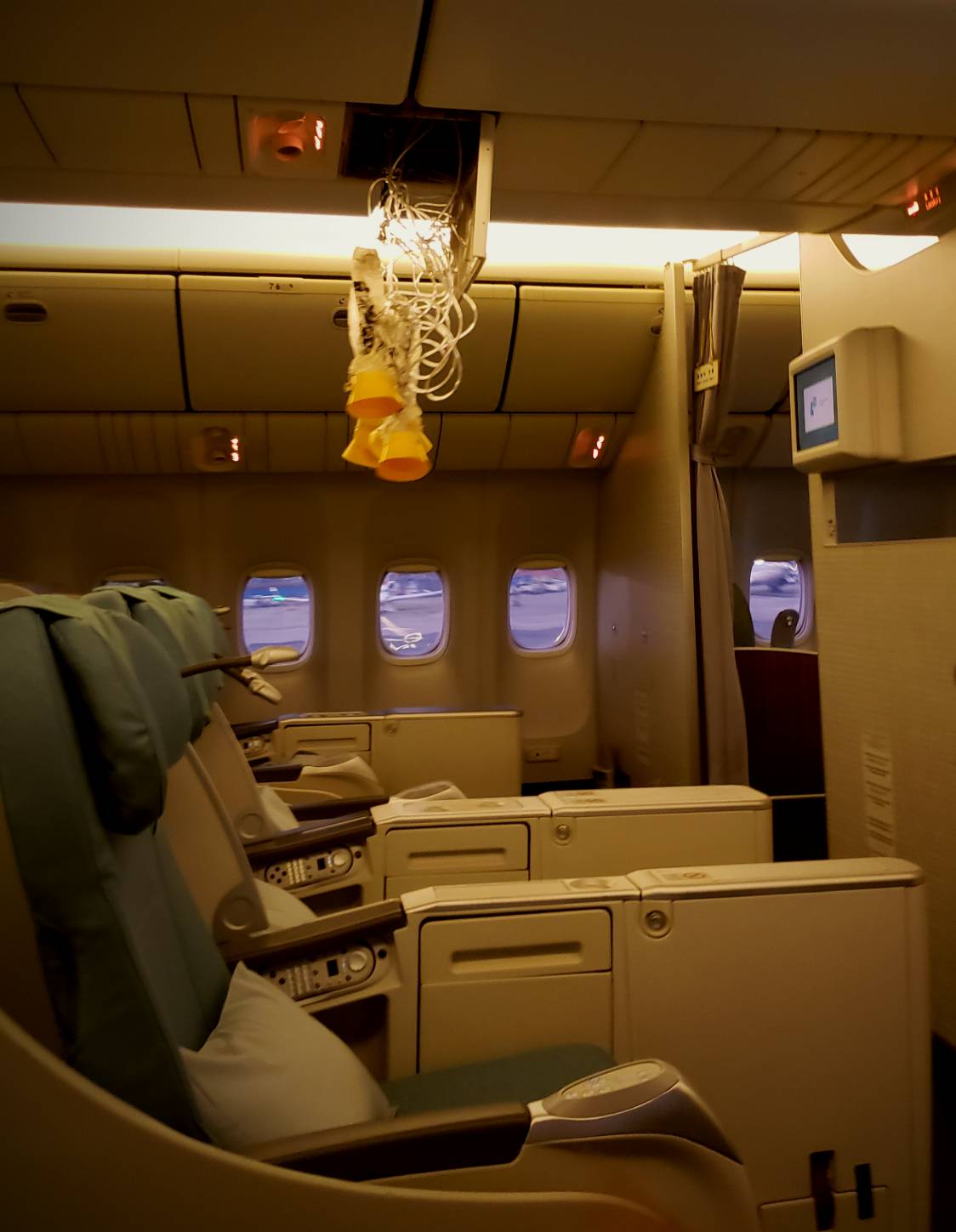
We’re from Michigan, and we’re also of an age that remembers when Classic Rock wasn’t classic, so of course we listened to Michigan’s own Bob Seger singing “Kathmandu” on the way in. It’s a great song and it’ll get you dancing in your seat. But for my money, Cat Stevens comes closer to setting the mood: “Oh Kathmandu I’ll soon be seeing you and your strange bewildering time.”
It begins with the taxi ride to the hotel. The streets are teeming with people, vehicles and cows moving in a dance that has no choreographer, and yet everyone seems to know what to do. There are no lane markers on the roads and few traffic lights. Sometimes, there are three lanes of traffic going east and one going west. Then, with no obvious cue, it reverses except now it’s five lanes of traffic instead of four. All the while, motorcycles zip, zoom and weave around cars and pedestrians, trucks lurch suddenly into the street, ornately decorated buses stuffed to the gills with people hanging out of them cut across lanes… all set to a cacophony of car horns that is loud, endless and everywhere.
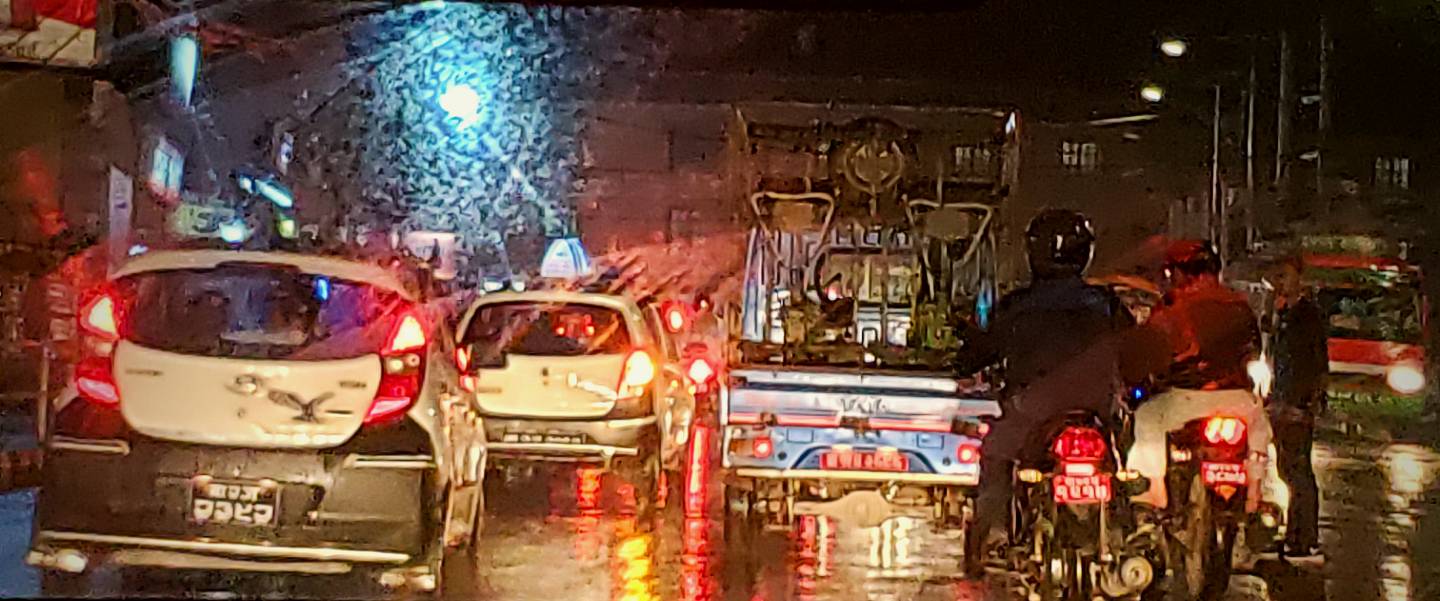
As you look around, you see the people and the colors of the clothes. Some are dressed in more western styles, some in saris, Buddhist monks wearing their maroon robes, children in school uniforms trailing after their mothers. Everyone is moving and jostling, you can feel urgency everywhere. The people are a sea of color thrumming to the sound of the car horns. Then you see a woman sitting on the side of the road, tending a fire, right there in the middle of everything, and she is warming her hands. Next to her, a man is butchering a goat.
And then there’s the trash. In some places it’s two or three feet deep. The power lines run like spaghetti noodles, hung low over the streets and sidewalks, hundreds of cables twisted together, branching off in every direction, slung up on poles like purses on the backs of chairs. Even with the car windows closed, you can smell the city… a mix of incense, car fumes, roasting meat and tropical flowers.
It is spectacular. It is overwhelming. It’s a fever dream. And it is like nothing else I’ve seen.
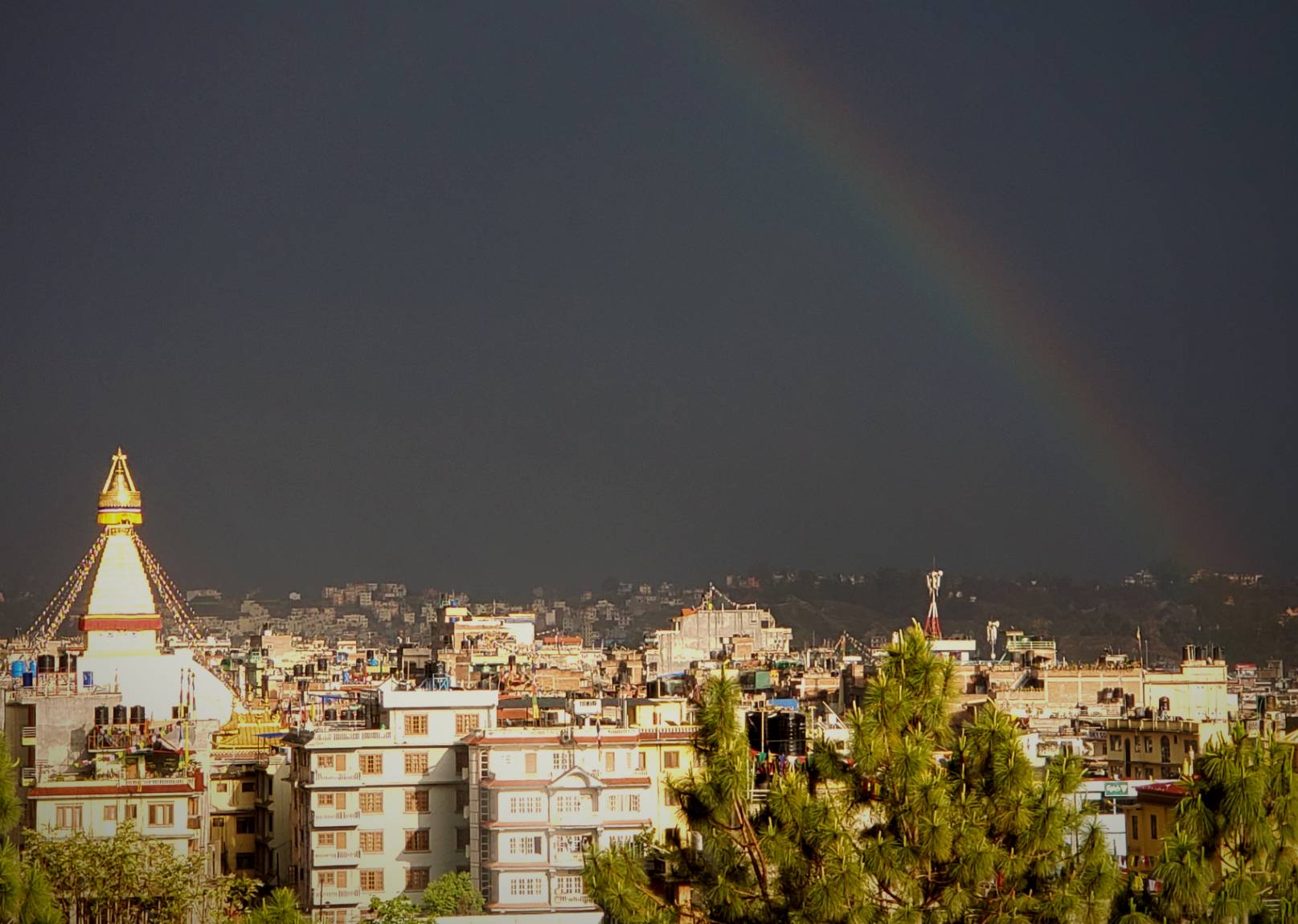
A rainbow in the skies above Kathmandu as we arrived at the hotel.The taxi rolled us into our hotel in the heart of the city: the Hyatt Regency, a vestige of British colonialism, it was the Governor’s Mansion once upon a time. But first, the guards at the gate scanned the cab for bombs. That’s a thing here. As we drove on to the property, you could feel the city recede behind the guarded, gated walls. The hotel is beautiful, as old British mansions tend to be, and the grounds are lush and tropical. The car horns and chaos outside the gates faded away, and it felt like we had landed in an oasis.
We slept very, very well, oblivious to the thunderstorms that rolled through the night into the morning.
We had one day to spend in Kathmandu before our planned trip up into the Himalayan foothills to visit Nepal’s first organic tea farm, the Kanchanjangha Tea Estate. We met up with our travel companions, Tom and Bernie Fraser, two of the brothers of Fraser Brothers tea, a Michigan based organic tea company (and by the way, the best and most fun travelling companions you could ever ask for).
In the morning, we had planned to do a flight around Everest, but after our experience with the big jet the day before, I think we were all relieved to find out it was cancelled because of the weather. Puddle jumpers and thunderstorms are two things I love… just not together.
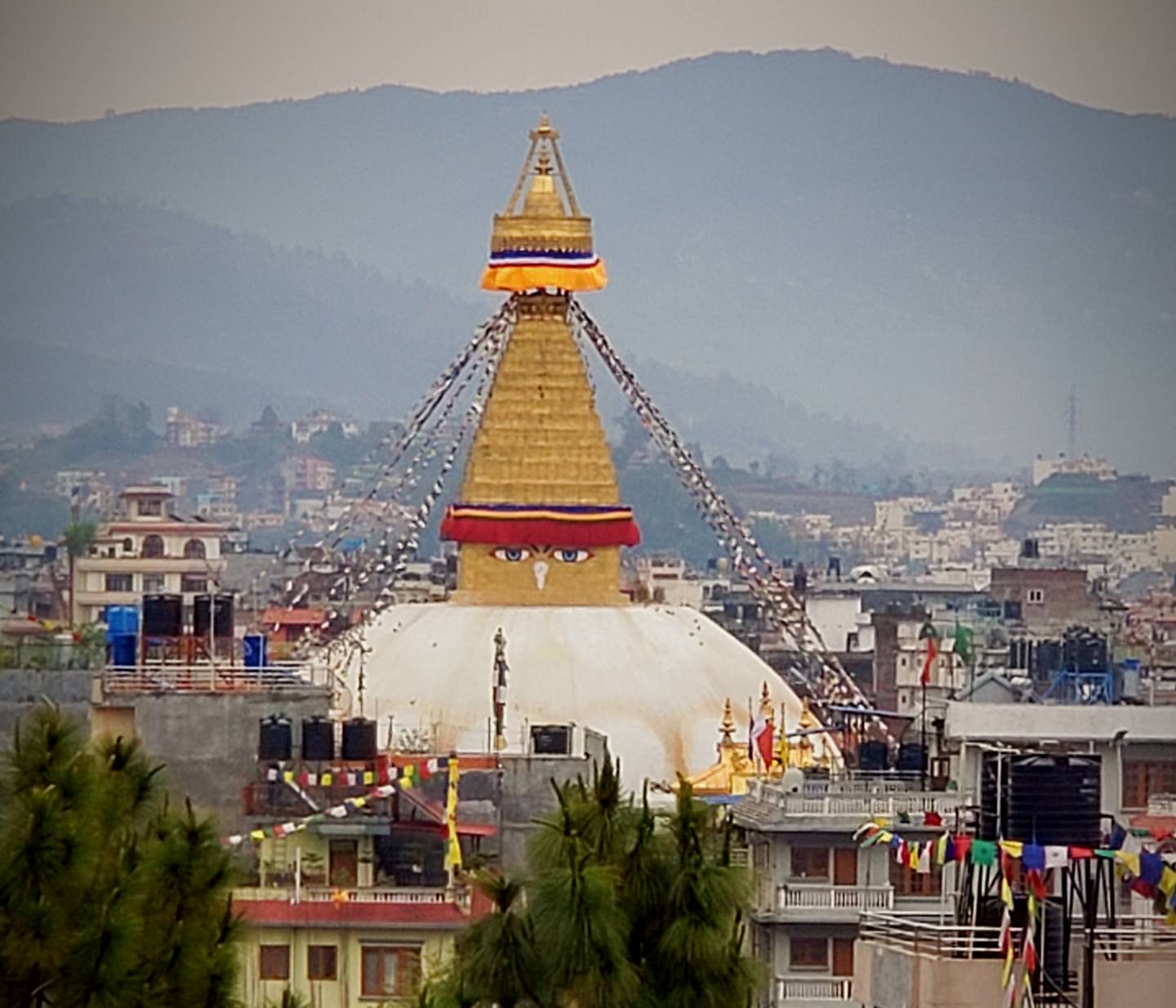
So, we had the day to ourselves to explore Kathmandu. Our first stop was the Boudhanath Stupa, or Temple, one of the largest Buddhist holy sites in the world. Its spire dominates the skyline, and you can see Buddha’s eyes following you no matter where you are in the City. It’s a vibrant, bustling place, where the faithful come to worship, and many more come to shop, gather and hustle. There are prayer flags fluttering everywhere, and the sound of chanting and prayer bells ringing. The smell of incense burning is almost overwhelming. It is a beautiful place, and haunting.
But it’s not just people that flock to the square around the temple. There are swarms of pigeons, of course, and you can buy seed to feed them. But Kathmandu has a street dog problem. Estimates vary, but the numbers I’ve seen say there as many as 35,000 mostly feral dogs that roam the streets. Let that sink in…that’s one stray dog for every 30, or so, people in the city of 1,000,000. They are everywhere. And many of them are in bad shape: mange, open wounds, hunger. Dog bites are common and can be fatal. There are approximately 200 cases of rabies reported a year in Kathmandu, and many of those are children who play on the streets and may not know how to deal with an aggressive dog. Tourists and locals alike are bitten, every day. It’s a heartbreaking situation, exacerbated by the lack of resources in this very poor country. It’s not that no one cares about the dogs. There are a number of organizations doing as much as they can to spay, neuter, vaccinate, heal, adopt… but the problem is overwhelming and intractable. (SEE: The Street Dogs of Kathmandu)
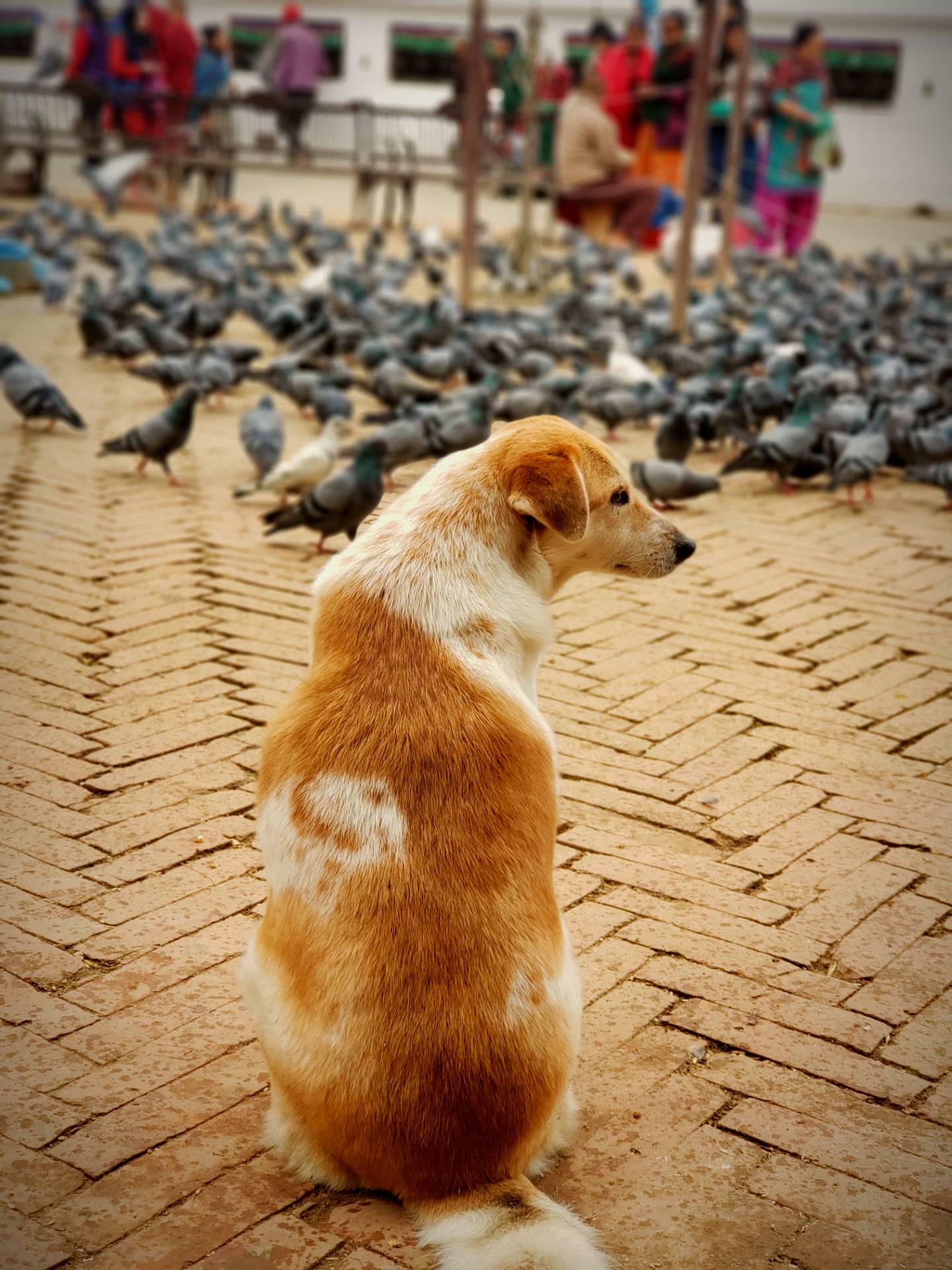
In the afternoon, the four of us headed west to the top of a hill above the city to visit the magical Swayambhunath Monkey Temple. Legend has it that the monkeys transformed from headlice on Manjushri, the bodhisattva of wisdom and learning, as he was raising the hill to build the temple. The setting is spectacular, high above the city, and the air feels cleaner up there. In addition to the massive domed Stupa, there are a multitude of temples and shrines, each elaborately decorated. It’s a lot to take in. And it’s definitely worth all the stairs you have to climb to get up there. There were monkeys everywhere. And street dogs, too. Clearly, there are scuffles between the two resident groups. We saw a few tense stand offs, and I noticed several monkeys that were missing parts. But the beauty of the place is piercing.
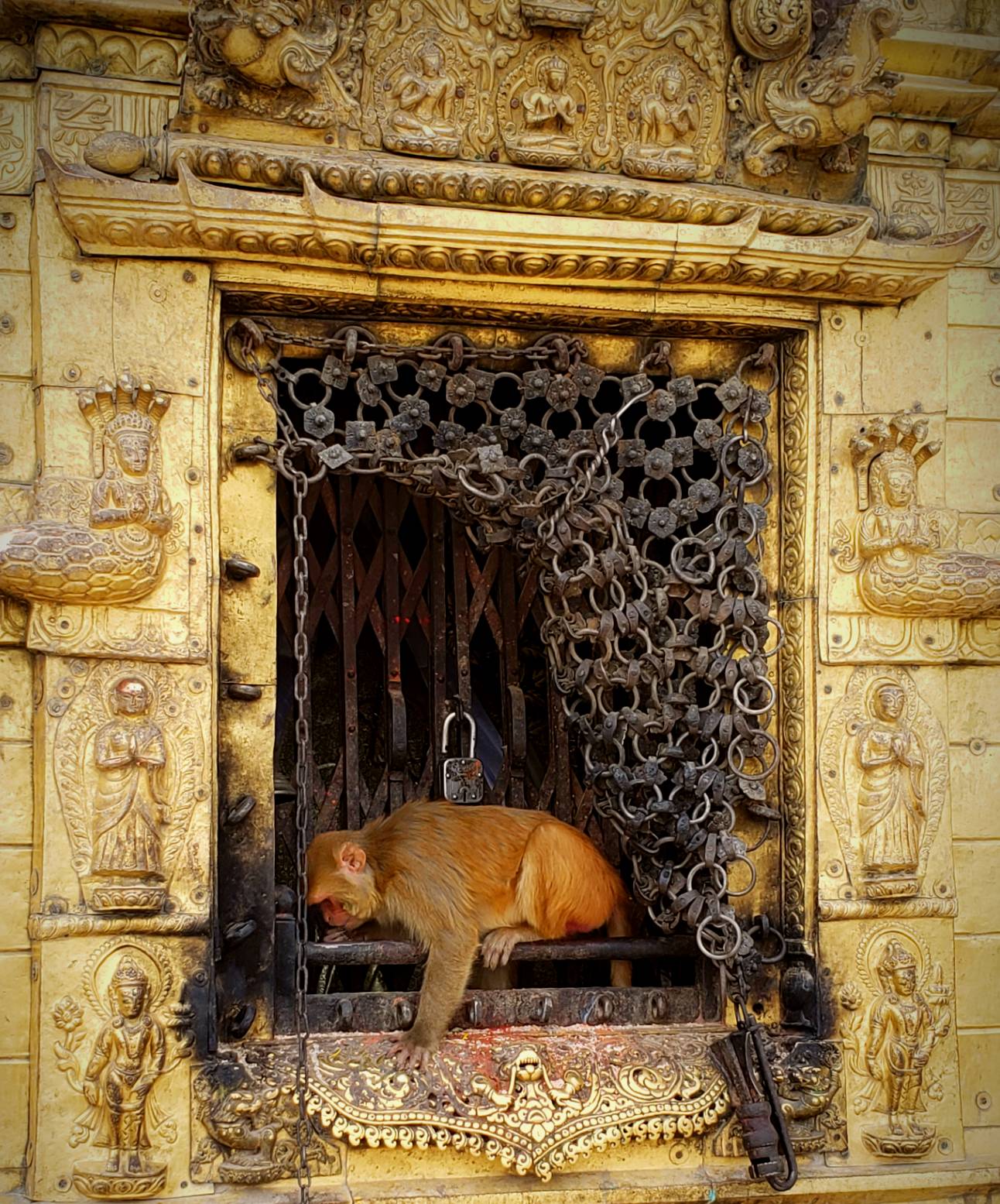
We saw a lot of families dressed in bright colors, children playing… in fact, one group had fashioned a ping pong table out of plywood, with bricks in place of the net. Ingenuity at its finest.
But my favorite scene was a holy man in full regalia, sitting on a bench, with a tip jar in front of him. He spoke not a word to anyone, completely serene. It was clear that you were welcome to gawk or take a picture, and it was just as clear that the price for that was a tip. Seems like a good trade.
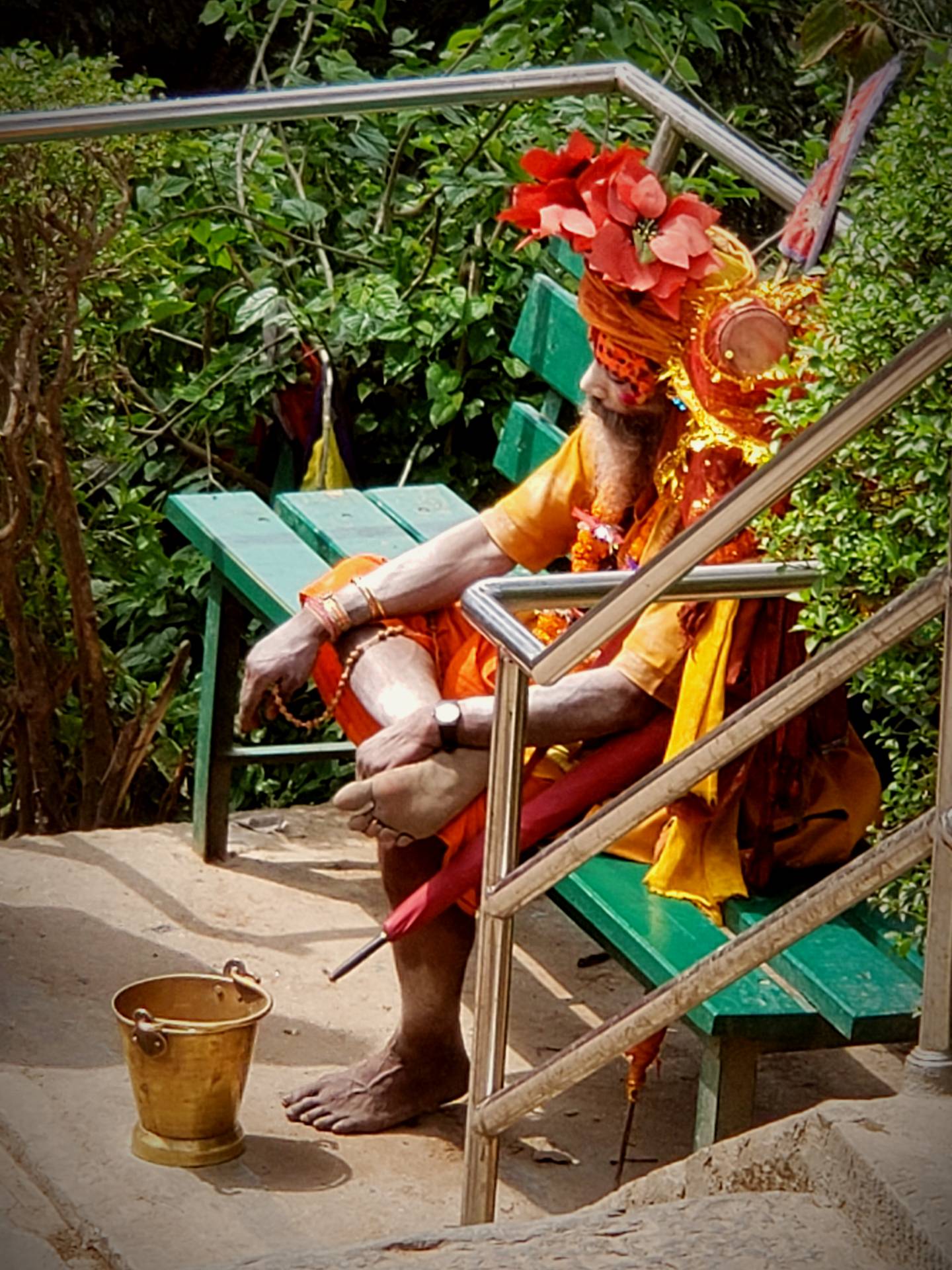
And just like that, our day in Kathmandu was over. We retreated back to the peacefulness of our hotel, trying to process all of the stimuli of the day and prepare for our long trip into the mountains. It was a lot to think about. Kathmandu is a rich, complicated, chaotic place of almost incomprehensible beauty, where the past and the present are all jumbled up together on its dusty streets. It’s challenging to see the conditions some people are living in: the trash, the poverty, the pollution. It’s heartbreaking to see the dogs. But the people are vibrant, and the culture is a palpable, living, breathing thing that gets under your skin. The city is like a riddle that you can’t quite solve, but you can’t stop thinking about. I would go back again in a heartbeat.
(COMING SOON: Pictures from the Backseat – Kathmandu)

